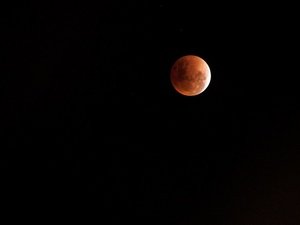
January 31 became a rare momentum for three simultaneous lunar events. NASA identified three phenomena in the form of supermoon, blue moon, and total lunar eclipse. This event is awaited everyone around the world because it promises beautiful moon sighting.
The moon on January 31 will be a supermoon. This event to call the Moon that was in perigee, the point closest to Earth. That is, the moon will be about 14 percent larger and brighter than usual, according to NASA, as reported by Huffington Post.
Supermoon is then called the blue moon. Why? Because, supermoon today is the second full moon in January. This full moon is usually separated by 29 days.
Each calendar month only has one full moon. So, if it happens twice like that on January 31 later, this event is commonly referred to as the blue moon. Blue moon phenomenon is also rare because the average occurs two and a half years.
"The term blue moon means there are two full moons a month, but it depends on where you are," said Fred Espenak, emeritus scientist at NASA's Goddard Space Flight Center to Wired.
But what really makes this supermoon and blue moon spectacular is the fact that this phenomenon coincides with other lunar events today: the total lunar eclipse.
That means the supermoon as well as the blue moon will pass through the shadow (umbra) of the earth. So, when a total lunar eclipse, the moon will be reddish or orange like copper so given the nickname of blood moon.
By summarizing three lunar trifecta events that coincided on January 31, 2018, came the term super blue blood moon. That is, the total lunar eclipse will change the second supermoon in January or blue moon into a blood moon that is orange or red-brown like copper.
Indonesian people can also enjoy this sky phenomenon at night if the weather is sunny. BMKG recorded the peak of this event occurred at 20:29 pm; 21.29 WITA; and 22.29 WIT.
This moment is rare because the three lunar events have not happened again since 150 years ago. This phenomenon was recorded last time appeared on March 31, 1866.
If the weather is sunny, observations can be viewed ideally and without tools from the border of Central Java and East Java to areas west of Sumatra.
In addition, the ideal location to observe the phenomenon of this supermoon is Observatory Boscha (Lembang), Thousand Island, Ancol, Taman Mini Indonesia Indah, Planetarium, Museum Fatahilah, Kampung Betawi, Setu Babakan, and Bukit Tinggi. Also observations were made at 21 hilal observation points.